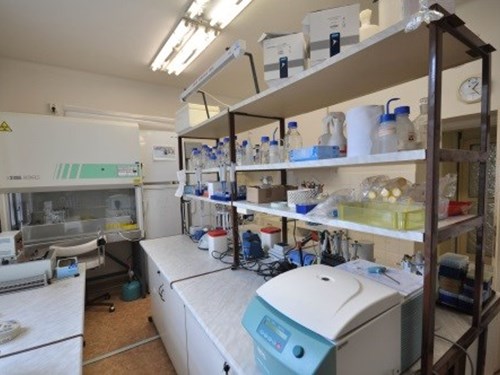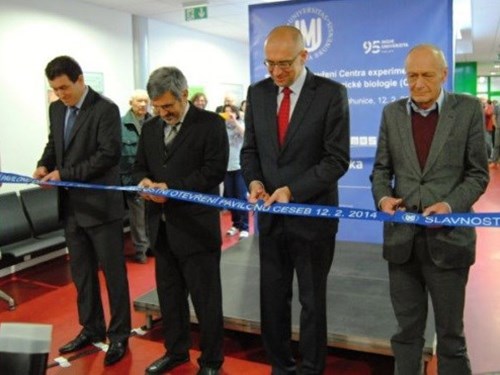History of Laboratory
LMDM builds on the research activity developed since the end of 1950s by the team of prof. Stanislav Rosypal at the Department of Microbiology and genetics at the Faculty of Science, which was focused on bacterial genetics, mostly on the study of pathogenic staphylococci and their phages. The first scientific work in this area was focused on DNA analysis in micrococci and staphylococci, specifically their G+C content. In this way it was proved that the genera Staphylococcus and Micrococcus are not phylogenetically related, since they differ in their G+C content by up to 30 %. These genera were discriminated by their G+C content, Staphylococcus as a low and Micrococcus as a high G+C genus (Rosypal, Rosypalová and Hořejš, 1966). We can appreciate this work not only forestablishing the basics of staphylococcal and micrococcal classification, but also as works that pioneered a discipline today known as molecular taxonomy.
Over the following years, staphylococci and their bacteriophages became the department’s main field of study. Since the middle of the 1970s, the workplace has been intensively studying the genetic basis of pathogenic staphylococcus resistance to antibiotics and in the 1970s and 1980s considerable attention was paid to a polyvalent staphylococcus phages with a broad host range. Thanks to their lytic capabilities, these phages are used for bacteriophage therapy. Further research in the lab was focused on studying the genetic basis of the polyvalence and lytic capabilities of polyvalent phages and also the factors that influence the lytic action of these phages.
Since 1985, studies have also focused on temperate staphylococcal phages that influence many characteristics of staphylococci and can change their virulence by producing toxins and providing antimicrobial resistance. Very little was known about this group, and their phylogenetic relationship was determined by molecular genome analysis at LMDM; this relationship was the basis for the subsequent identification of genome sequences specific for representative phage species. The results were used for the epidemiologic analysis of S. aureus clinical strains.
Since the beginning of the 1990s, our team has focused on the application of molecular approaches for the identification, differentiation and typing of staphylococcal species and strains. Collaboration with the Institute of Molecular Pathology in Vienna and the University in Tübingen lead to obtaining a common EU grant and enabled the modernisation of the lab’s equipment. In the 1990s, the laboratories of LMDM were upgraded, enabling complex research on the molecular taxonomy of grampositive cocci – variability in the genome molecular structure of S. aureus and other pathogenic staphylococcal species, and refinement of their species classification including several new species in the genera Staphylococcus and Macrococcus.
At present, the Laboratory of Molecular Diagnostics of Microorganisms continues to conduct research focused on the molecular biology of pathogenic and virulent staphylococcal strains and research in the field of bacteriophages.








